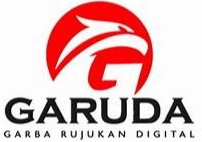Perancangan Dinamometer untuk Mengukur Gaya Potong pada Mesin Freis untuk Pemesinan Material Fiber Reinforced Polymer
DOI: https://doi.org/10.25077/metal.4.1.1-12.2020
Author(s)
Firman Ridwan (Jurusan Teknik Mesin, Universitas Andalas)Refki Harvendri (Jurusan Teknik Mesin, Universitas Andalas)
Abstract
Milling machine is a machine that cuts a workpiece using a plural chisel that rotates on a freis machine. During the freis process, the material is cut because of the cutting force that occurs between the tool and the workpiece. The amount of cutting force can be known by theoretical calculations, but the theoretical calculation will produce a less accurate cutting force because of the many factors that influence the cutting force and the assumptions given in the calculation. Therefore, direct measurements are needed in order to see the magnitude of the cutting force that occurs during the freis process. The amount of cutting force obtained will be needed in analyzing machining parameters to obtain a combination of machining that is efficient and profitable. The tool used to measure the amount of cutting force on a freis machine is a dynamometer. The constituent components of the dynamometer are loadcell strain gauge, INA 125P amplifier IC, and national instrument hardware acquisition data 6212. The dynamometer is designed to be able to read 3 directions of force, namely the cutting force (Ft), axial force (Fz), and feeding force (Fy). Measuring the average cutting force (Ftm) obtained using aluminum workpieces is 97,6002 N, acrylic workpiece is 65,3338 N, GFRP (Glass Fiber reinforce polymer) chopped strand mat is 146,8845 N, and GFRP woven roving is 103.3915 N. Dimensions of the dynamometer are designed with a total length of 32 cm, width 32 cm, and height of 18 cm.
Keywords
Full Text:
PDFReferences
I. Korkut and M. Boy. “Experimental Examination of Main Cutting Force and Surface Roughness Depending on Cutting Parameters,” Journal of Mechanical Engineering, Vol. 54, No.7-8, pp. 531-538, 2008.
Try, 2011, elemen dasar proses freis, diakses melalui http://mesin-teknik.blogspot.co.id/2011/11/elemen-dasar-proses-freis-milling.html pada tanggal 18 oktober 2017, pukul 14:36 WIB.
A.K. Baldoukas, F. A. Soukatzidis, G.A. Demosthenous and A. E. Lontos. “Experimental investigation of the effect of cutting depth, tool rake angle and workpiece material type on the main cutting force during a turning process,” in Proc. of the 3rd International Conference on Manufacturing Engineering (ICMEN), 1-3 October 2008, Chalkidiki, Greece.
G.P. Sam, D.S. Djoko dan Z. Arifin. “Rancang Bangun Dynamometer Untuk Pengukuran Gaya Potong Mesin Bubut,” Jurnal Mekanika, Vol.12, No. 2, 2014.
T. Rochim. Teori dan Teknologi Proses Pemesinan. Higher Education Development Support Project, FTI-ITB, 1993.
L. Armbrust and P. Wyatt. Load cell. Diakses melalui http://studyres.com/doc/913037/load-cells pada tanggal 23 oktober 2017 pukul 12:48 WIB.
A. Lavatelli. A low cost strain gage load cell amplifier. Diakses melalui http://www.mechtechplace.net/mech-tech-electronics/building-a-low-cost-strain-gage-load-cell-amplifier/ pada tanggal 23 Juli 2018 pukul 17:03 WIB.
Teori dasar load cell, 2015, diakses melalui http://www.rajaloadcell.com/ article/teori-dasar-load-cell-112 pada tanggal 18 oktober 2017 pukul 15:03 WIB.
National instrument technical sales. Bus-Powered M Series Multifunction DAQ for USB. 2014. Diakses melalui http://ni.com pada tanggal 21 Mei 2018 pukul 20:00 WIB.
A.B.Chattopadhyay. Dynamometer for measuring cutting force. Indian Institute of Technology Kharagpur. India, 2011.
 Article Metrics
Article Metrics
This article has been read : 400 timesPDF file viewed/downloaded : 168 times
Copyright (c) 2021 Firman Ridwan, Refki Harvendri
View METAL's Stats

This work is licensed under a Creative Commons Attribution-NonCommercial-ShareAlike 4.0 International License.







